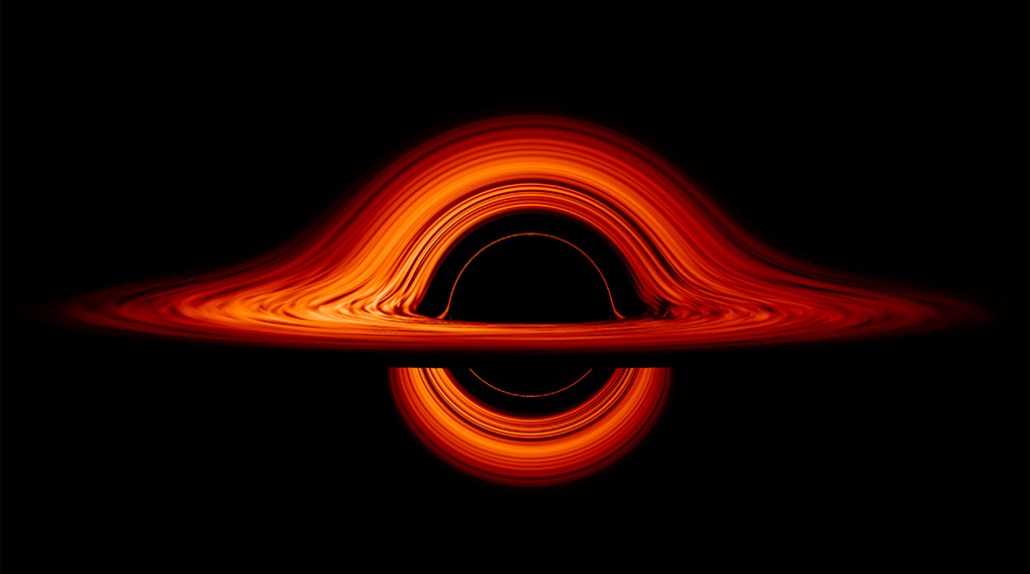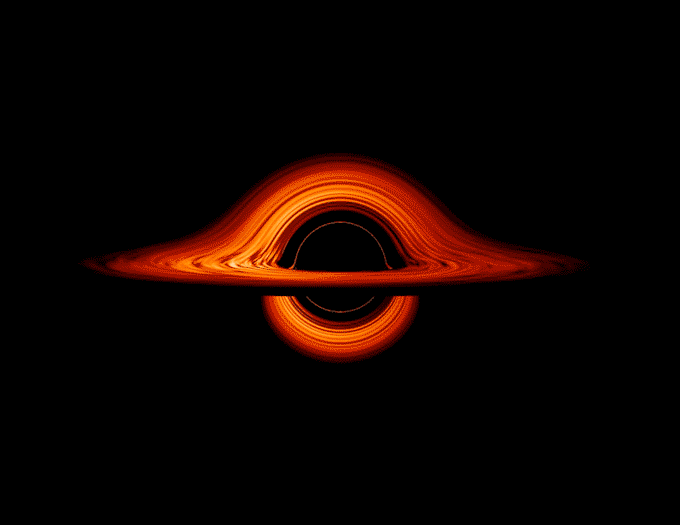NASA’s new black hole visualizations showcase how gravity warps light
Images from computer simulations highlight the ‘photon ring’ and more

In computer simulation images, a gaseous accretion disk (seen edge-on) swirls around a black hole like a cosmic drainpipe. The black hole’s superstrong gravity warps the light from that disk in weird ways.
Jeremy Schnittman/NASA’s Goddard Space Flight Center
- More than 2 years ago
In April, astronomers wowed the world with the first real-life picture of a black hole. But that blurry, still image of the supermassive monster in the galaxy M87 doesn’t really convey just how wildly a black hole’s immense gravity distorts its surroundings. Now, images from computer simulations highlight in more detail how a black hole warps spacetime like a fun house mirror — and how that affects the appearance of its glowing accretion disk of infalling material.
In these simulation images, the white-hot accretion disk looks basically how you’d expect when seen face-on — similar to Earth’s viewing angle of M87’s black hole in that historic first image (SN: 4/10/19). But seen along its edge, the computer-rendered accretion disk looks more bizarre. The black hole’s superstrong gravity bends light emanating from gas in the disk behind the black hole, so that the disk’s far side seems to split into arcs above and below the abyss.
Light from gas swirling around the black hole looks more like a time-lapse image of nighttime city traffic than a continuous band of material, thanks to magnetic fields threaded throughout the disk. “As the gas swirls around, it tangles the magnetic fields [and] you get these knots,” says astrophysicist Jeremy Schnittman of NASA’s Goddard Space Flight Center in Greenbelt, Md., who created the black hole images posted online September 25.

These magnetic field knots heat surrounding gas, creating bright spots. “If the entire disk were rotating together, these [knots] would look more like random blobs,” Schnittman says. But since gas closer to the black hole orbits faster, the hot spots get stretched out into bright smears as gas circles the cosmic drain.
Another oddity, which appears when viewing the black hole along its edge, is that gas on the left side of the disk — zooming toward the viewer — is brighter than gas on the right. That’s because the light waves emitted by quickly approaching gas pile up on their way to the viewer, whereas waves from receding gas get spread out, Schnittman says.
Closer to the pit of the black hole, a “photon ring” appears. Whereas other light from the accretion disk is merely deflected by the black hole’s gravitational field, particles of light in this ring are snared by the black hole’s gravity such that they circle all the way around at least once before escaping. Inside that photon ring lies the black hole’s event horizon, beyond which nothing — not even light — can escape.
Simulations like this reveal not only how a black hole might appear in a single moment, but also how it could change over time, says Harvard University astrophysicist Avi Loeb, who was not involved in the work. In the future, astronomers hope to gather enough observations to make movies that unveil “what the weather is like around a black hole,” Loeb says. Comparing those real-world black hole films against simulations could reveal the underlying physics that governs an accretion disk’s appearance.







